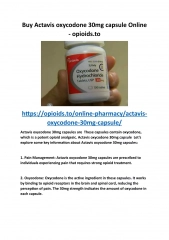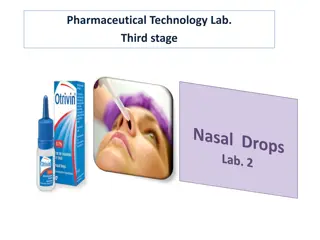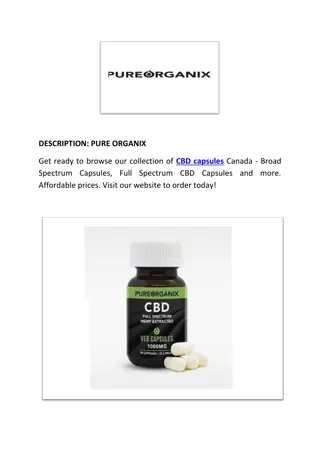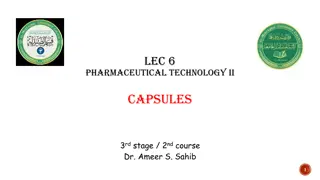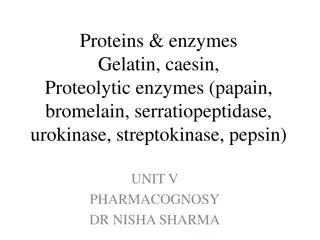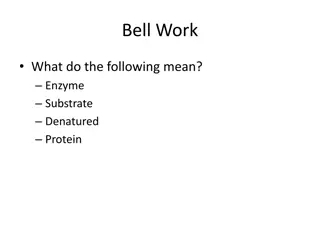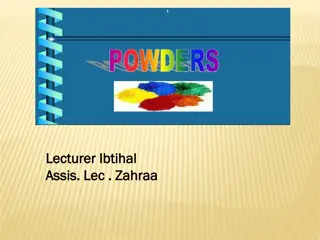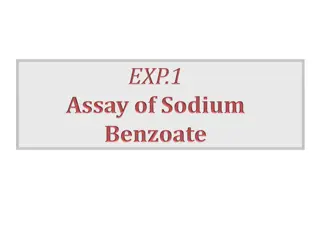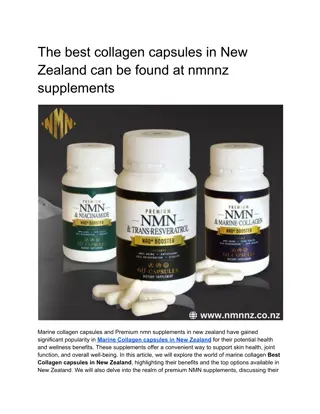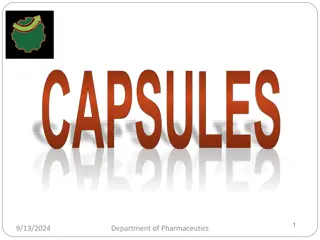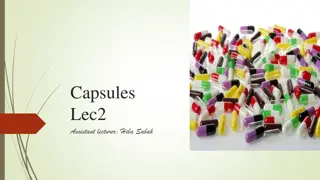Understanding Gelatin Capsules in Pharmaceutical Formulations
Gelatin capsules are versatile dosage forms used to encapsulate various types of medicinal agents. This article explores the types of gelatin capsules, including hard, soft, and enteric-coated capsules, their composition, uses, and storage requirements. Gain insights into the differences between these capsules and their applications in pharmaceutical preparations.
- Gelatin Capsules
- Pharmaceutical Formulations
- Dosage Forms
- Hard Gelatin Capsules
- Soft Gelatin Capsules
Download Presentation

Please find below an Image/Link to download the presentation.
The content on the website is provided AS IS for your information and personal use only. It may not be sold, licensed, or shared on other websites without obtaining consent from the author. Download presentation by click this link. If you encounter any issues during the download, it is possible that the publisher has removed the file from their server.
E N D
Presentation Transcript
Lecturer ibtihal Assis. Lec. Zahraa 24 17
Are solid dosage forms in which medicinal agent (solid, semisolid or liquid) and/or inert substance are enclosed with in a small shell of gelatin. 24 17
Types of gelatin capsules: Hard gelatin capsules Soft gelatin capsules Enteric gelatin capsules 24 17
Hard gelatin capsules: Hard gelatin capsule is composed from two main parts which are cap and body. Hard gelatin capsule is cylindrical with hemispherical ends. The empty capsule shells are made from a mixture of gelatin, sugar and water. They may be colored with FD and C dyes, and may be made opaque by adding agents such as titanium dioxide. Hard gelatin capsule is used to enclose solid medicament. 24 17
Soft gelatin capsules: Soft gelatin capsule is a unit dosage form without cap and body. Soft gelatin capsules shapes are either cylindrical with hemispherical end or may be spherical or oval shape. Soft gelatin capsules are used to enclose liquid or semisolid medicament. Soft gelatin capsules are composed from gelatin, sugar and water in larger amount than hard gelatin capsule. In addition, it contains plasticizer as glycerin to give elastic properties. Since it contain high amount of water with sugar so it support microbial growth so it needs a preservative. 24 17
Enteric coated capsules: In this type of capsules, gelatin is treated with certain materials formaldehyde so the capsule is not dissolve in gastric PH but in intestinal PH. such as 24 17
Storage of capsules: Capsules should be stored in closed container in cool dry place(we must be avoid moisture and extreme temperature because high temperature make the capsule brittle and easily broken, moisture lead to microbial growth). 24 17
Approximate Capsules size and fill capacities: Size of capsule Capacity in gm 000 1 00 0.65 0 0.5 1 0.32 2 0.25 3 0.2 4 0.15 5 0.1 24 17
Preparation of capsules: Prepare one capsule more than the required number to avoid any loss during trituration and weighing except for potent or narcotic drug, we calculate the exact number of the required capsule. Mix ingredients together with trituration by ascending order (geometrical dilution). Choose suitable size of capsule. Fill the capsule. Polish the capsule then dispense. 24 17
RX1 Ephedrine 1gr Ft. cap M.ft. IX cap Calculation: We must prepare 10 capsules. 10*1 gr =10 gr of drug for preparation of 10 capsules = 0.66 g 0.06 g /cap. The nearest capsule size is (size 5) 10*0.1 =1 g the weight needed for preparation of 10 capsules of size 5 1-0.66 = 0.34 g diluent 24 17
Available tablets Paracetol Meprobamate Prednisolon M.ft.9 cap. 400mg 500mg 100mg 200mg 3mg 5mg Note 1- the total wight of crushed tablets 7 gm 2-available size is 0 24 17
Calculations: 10*400=4000/500=8 tab. 10*100=1000/200=5 tab 10*3=30/5=6 tab. 10*0.5=5 g 0.5 Therefore, we multiply the number of capsule and we tell the patient to take double amount of capsule. 10 - 7= 3 g diluent 24 17
Available tablets Meclodin Valium 1 mg 2 mg Vit. B6 20 mg 40 mg M.ft. 9 cap. 8 mg 10 mg Notes: 1- the total wt. of crushed tablets is 2.5 gm 2- available size is 0 24 17
Calculations : 10*8=80/10=8 tab. 10*1=10/2=5 tab. 10*20=200/40=5 tab. 10*0.5=5 g 5-2.5=2.5 g diluent 24 17


